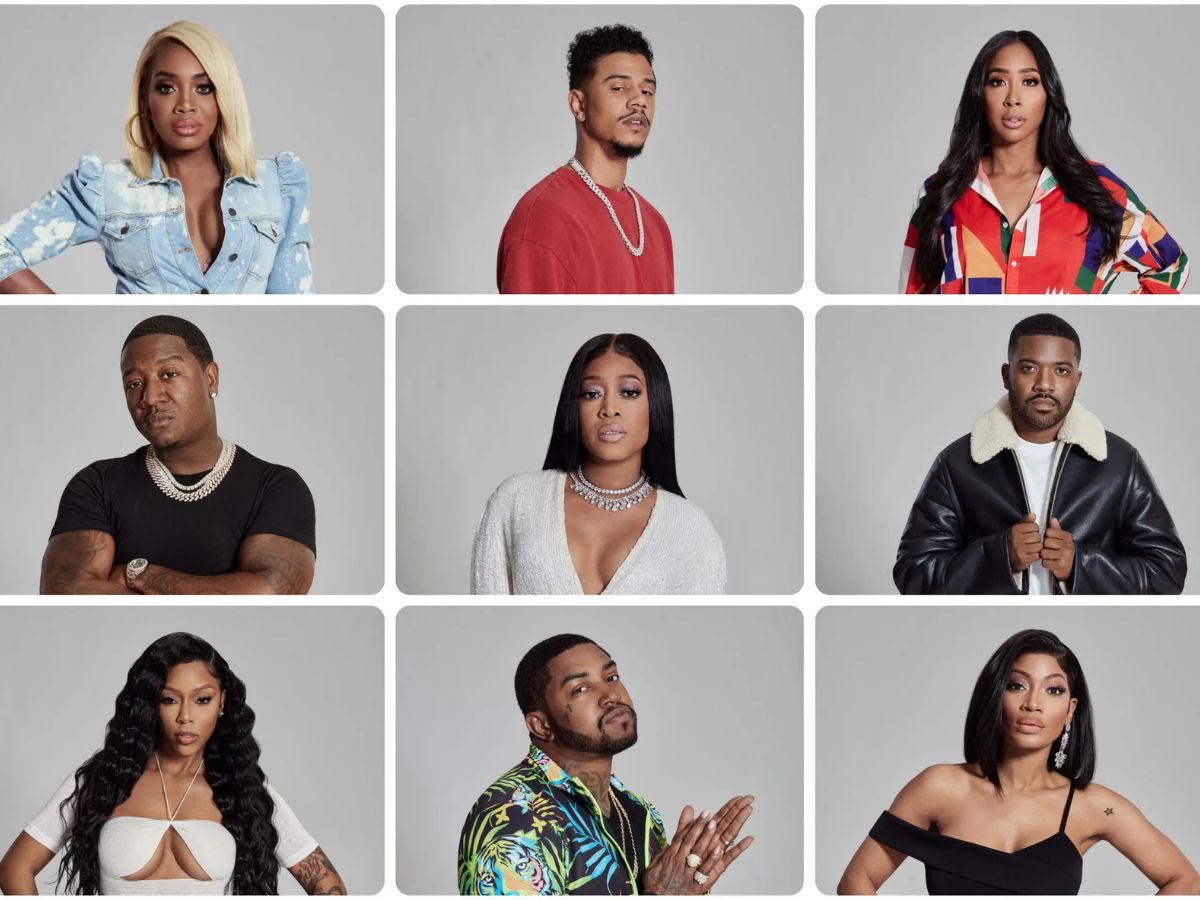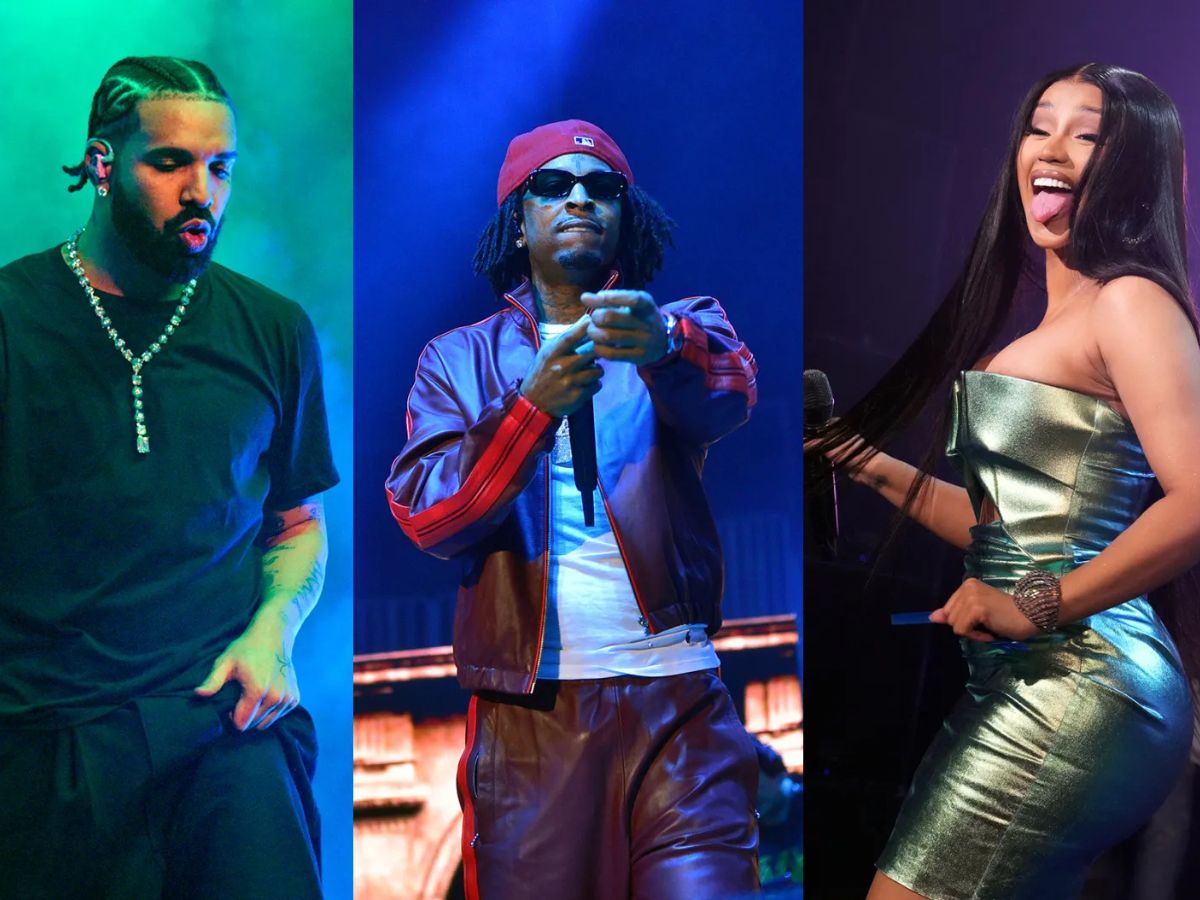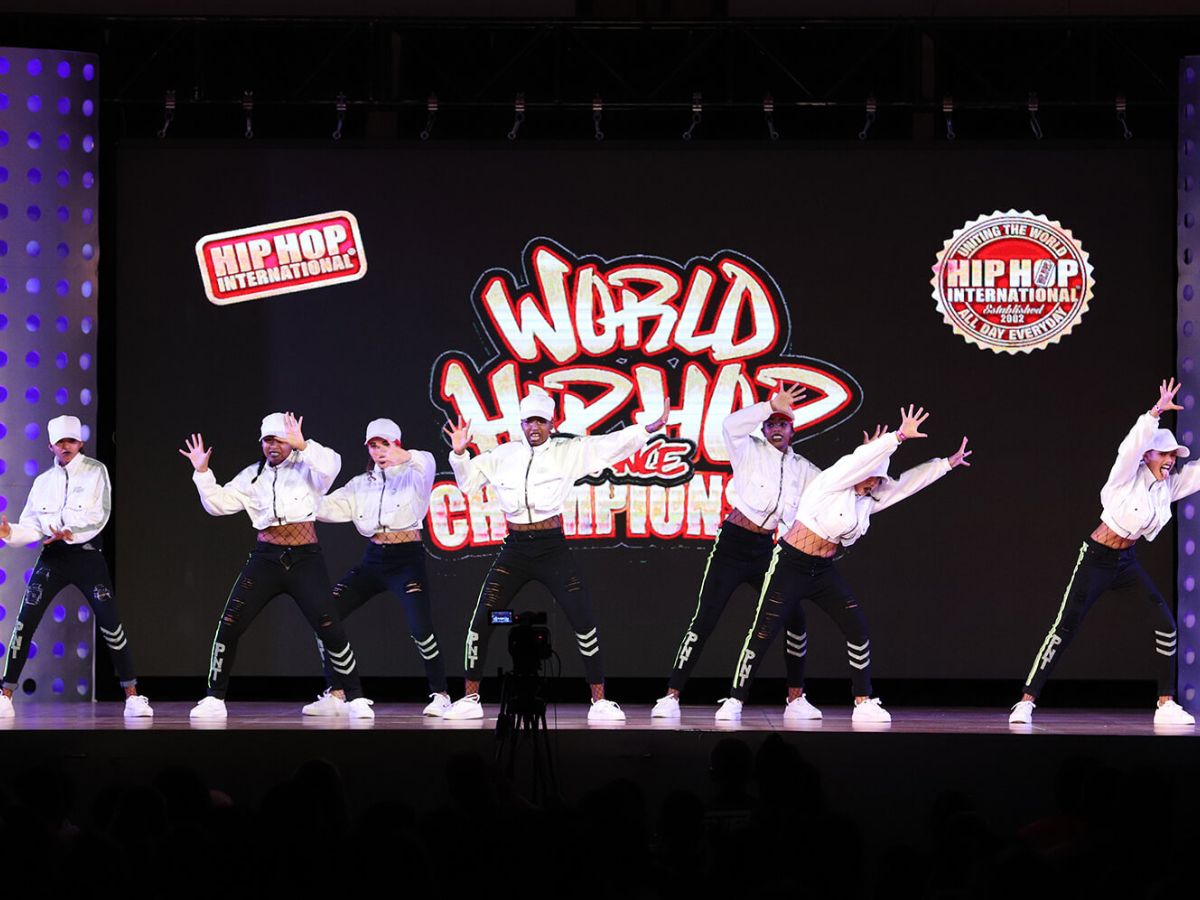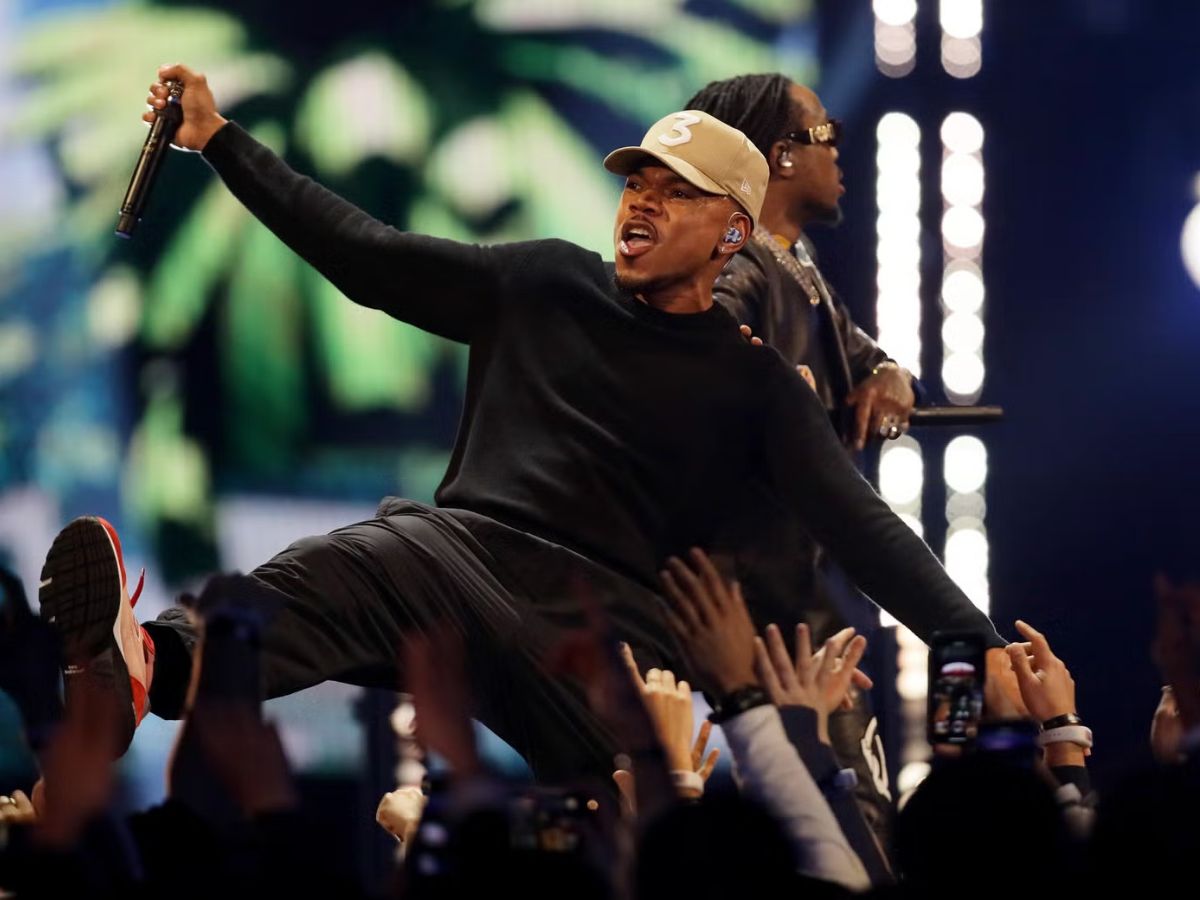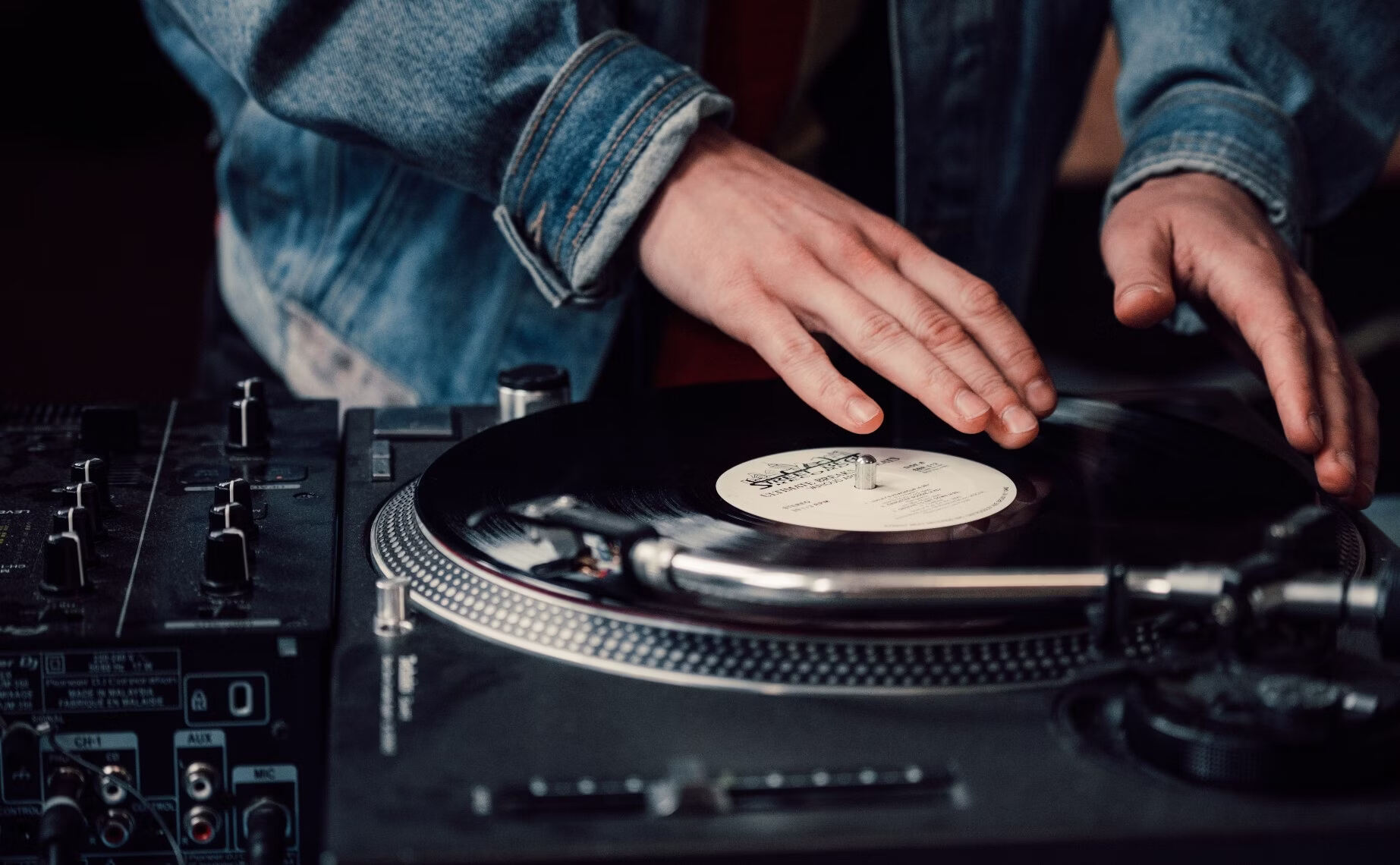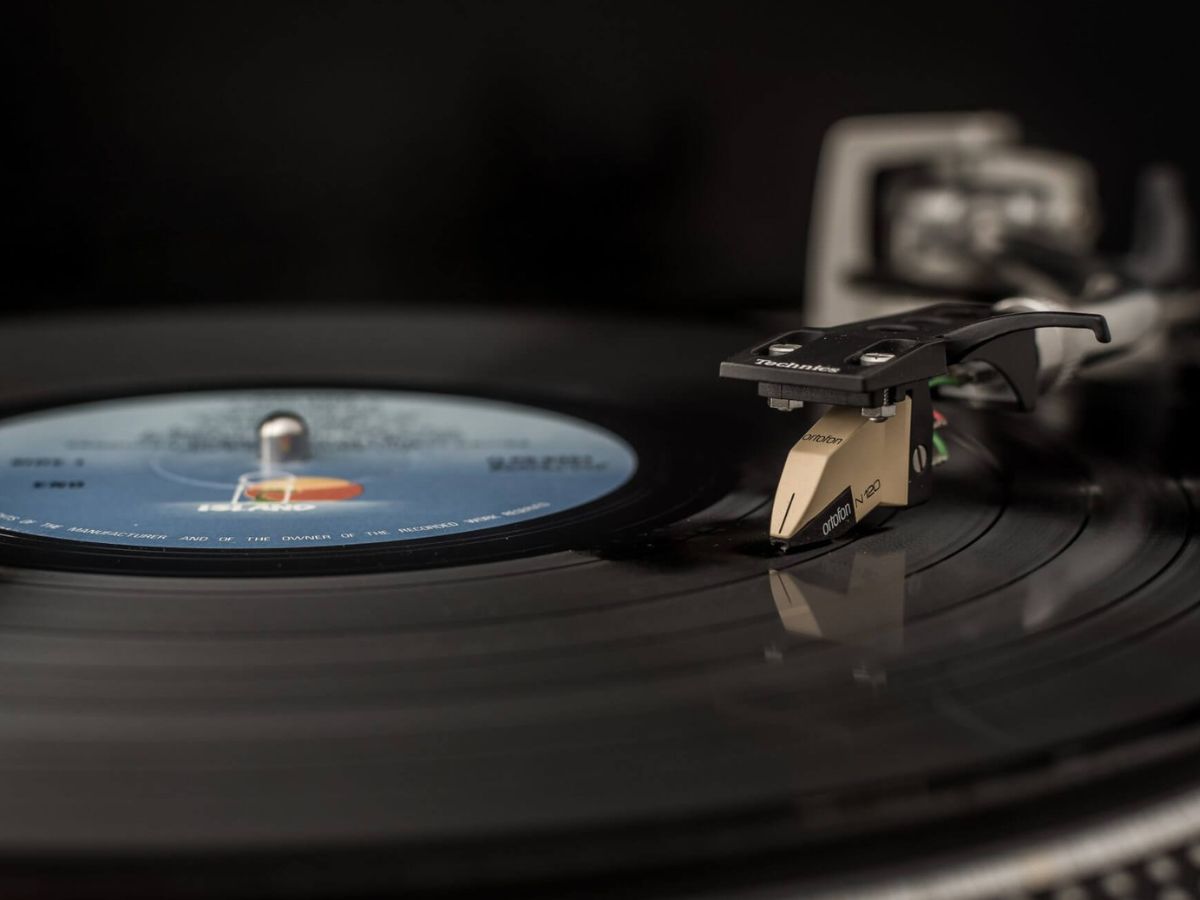

Hip Hop
What Instruments Does Hip Hop Use
Modified: February 15, 2024
Discover the diverse range of instruments used in Hip Hop music, from classic turntables and samplers to modern synthesizers and drum machines. Explore the unique sounds that define this iconic genre.
(Many of the links in this article redirect to a specific reviewed product. Your purchase of these products through affiliate links helps to generate commission for AudioLover.com, at no extra cost. Learn more)
Table of Contents
Introduction
Hip hop, a genre born out of the Bronx in the 1970s, has become a global cultural phenomenon. Its unique blend of rapping, beats, and lyrical storytelling has captivated audiences around the world. At the heart of hip hop’s sound are the instruments that bring its music to life.
In this article, we’ll explore the instruments commonly used in hip hop production and how they contribute to the genre’s distinctive sound. From the iconic turntable to powerful synthesizers and live instruments, each element plays a crucial role in shaping hip hop music.
Whether it’s the rhythmic beats of a drum machine or the soulful melodies of a keyboard, hip hop instruments are the backbone of the genre. They provide the foundation for rappers to express their thoughts and emotions and create a powerful sonic experience for listeners.
Join us as we dive into the world of hip hop instruments, exploring their history, significance, and the artists who have revolutionized their use. From the pioneers who shaped the early days of hip hop to the modern producers pushing the boundaries of sound, we’ll uncover the range of instruments that define this vibrant genre.
Turntable
The turntable is one of the most iconic instruments in hip hop. Originally designed as a device to play vinyl records, it became an integral tool for DJs to manipulate and create music. In hip hop, DJs use turntables to sample beats, scratch records, and create rhythmic patterns.
Sampling, the process of taking a small portion of a pre-existing recording and incorporating it into a new composition, is a cornerstone of hip hop production. The turntable allows DJs to loop and manipulate these samples, creating unique and innovative soundscapes. DJs like Grandmaster Flash and DJ Kool Herc were pioneers in using turntables to create new beats by extending breaks in songs, giving birth to the art of breakbeat deejaying.
Scratching, another technique popularized by hip hop DJs, involves manipulating the vinyl record back and forth to create rhythmic patterns. This technique adds a dynamic and improvisational element to the music, allowing DJs to become performers in their own right.
Over the years, turntablism has evolved as an art form within hip hop culture. DJs have pushed the boundaries of what can be achieved with a turntable, showcasing their skills in scratching, beat juggling, and creating intricate compositions using multiple records simultaneously. Artists such as DJ Premier, J Dilla, and DJ Shadow have elevated turntablism to new heights with their innovative techniques.
While digital technology has made its way into hip hop production, the turntable remains an essential instrument for many producers and DJs. Its distinct sound and tactile nature continue to inspire creativity and drive the art of sampling and vinyl manipulation in hip hop.
Drum Machine
The drum machine is a vital instrument in hip hop production, responsible for creating the rhythmic foundation of a track. It is essentially an electronic device that replicates the sounds of various drums and percussion instruments.
In the early days of hip hop, drum machines like the Roland TR-808 and Roland TR-909 became iconic due to their distinctive sounds. These machines offered producers the ability to program and sequence drum patterns, giving them complete control over the rhythm of their tracks.
With a drum machine, hip hop producers can create drum patterns that are unique, intricate, and dynamic. They can layer different drum sounds, adjust their volume levels, and experiment with various effects to shape the overall sound of the track. The drum machine also allows for precise control over the timing and velocity of each drum hit, resulting in a tight and rhythmic groove.
In addition to the traditional drum sounds, many drum machines have expanded their capabilities to include a wide range of electronic and futuristic sounds that are synonymous with hip hop. This versatility allows producers to experiment and push the boundaries of what is possible, creating innovative and genre-defining beats.
Some of the most iconic hip hop tracks and beats have been created using drum machines. Artists like Public Enemy, Run-DMC, and N.W.A. relied heavily on the powerful and punchy sounds of the drum machine to create their hard-hitting and energetic tracks.
Even in the modern era of hip hop production, the drum machine continues to be a valuable tool. While software-based drum machines have gained popularity, many producers still prefer the tactile feel and unique sound characteristics of hardware drum machines.
Whether it’s the classic sounds of the Roland TR-808 or the modern innovations of digital drum machines, this instrument remains a fundamental element in the creation of hip hop music.
Sampler
A sampler is an instrument that allows producers to record and manipulate audio samples, which can be anything from a drum beat to a vocal line. In hip hop, the sampler is crucial for creating unique and innovative sounds by layering and rearranging samples.
The advent of samplers revolutionized hip hop production by providing artists with the ability to incorporate various elements from different sources into their tracks. Producers could sample records, movie soundtracks, field recordings, or any other audio source, and then chop, rearrange, and manipulate these samples to create entirely new compositions.
Samplers offer a wide range of creative possibilities. Producers can change the pitch, speed, and rhythm of a sample, loop sections, add effects, or trigger the sample in different ways to create variations. By combining different samples, producers can create intricate and textured arrangements that are unique to their artistic vision.
Sampling has played a monumental role in the development of hip hop, allowing artists to pay homage to previous generations of music while also creating something fresh and distinct. Artists like J Dilla, Kanye West, and DJ Premier are renowned for their exceptional use of sampling, elevating the technique to an art form.
However, it is important to note that sampling in hip hop has also raised legal and ethical concerns surrounding copyright infringement. Artists and producers need to navigate the complexities of sampling laws and clear the necessary permissions to avoid legal troubles.
In the digital age, sampling has become even more accessible with the rise of sampler software and plugins. These virtual alternatives offer a wide variety of sampling capabilities, making it easier for producers to experiment and create unique sounds.
Despite the advancements in technology, the art of sampling remains an integral part of hip hop, providing a rich tapestry of sounds and textures that shape the genre’s distinctive aesthetic.
Synthesizer
The synthesizer is a versatile instrument that has played a significant role in shaping the sound of hip hop. A synthesizer is capable of generating a wide range of electronic sounds using oscillators, filters, and modulation techniques.
In hip hop, synthesizers are used to create melodic elements, chords, and atmospheric textures that add depth and character to a track. They can produce a variety of sounds, from classic analog tones to futuristic and experimental sounds.
Synthesizers offer producers endless possibilities for creativity and sound design. They can be programmed to produce fat basslines, soulful leads, haunting pads, or cutting-edge sound effects. With parameter adjustments and modulation techniques, producers can shape the sound in real-time, adding expression and dynamics to their compositions.
The use of synthesizers in hip hop can be traced back to the early days of the genre. Artists like Dr. Dre and The Bomb Squad incorporated synthesizer sounds in their productions, contributing to the iconic sound of ’90s West Coast and East Coast hip hop.
Over the years, synthesizers have evolved, from hardware units to software-based virtual instruments. Modern synthesizer plugins offer an extensive range of sounds and functionalities, making them accessible to aspiring producers and artists on various budgets.
Notable hip hop producers, such as Timbaland, Metro Boomin, and Pharrell Williams, have embraced the capabilities of synthesizers and incorporated them into their signature sound. Synthesizers have become a crucial tool in crafting catchy melodies, unique soundscapes, and catchy hooks that define the sonic identity of many hip hop hits.
Whether it’s the warm analog tones, the futuristic digital sounds, or the innovative sound design possibilities, synthesizers continue to be a fundamental instrument in hip hop production.
Keyboard
The keyboard is a versatile instrument that plays a significant role in hip hop production. It offers a wide range of melodic and harmonic possibilities, allowing producers to create catchy melodies, chord progressions, and musical arrangements.
In hip hop, keyboards are often used to add melodic layers and musicality to a track. They provide a foundation for rappers to flow over and contribute to the overall vibe and mood of the song.
Keyboards come in various forms, including acoustic pianos, electric pianos, synthesizers, and MIDI controllers. Each type offers its own unique sound and characteristics, allowing producers to choose the instrument that best suits their artistic vision.
An acoustic piano can provide a rich and organic sound, adding depth and emotion to a hip hop track. Electric pianos like the Fender Rhodes or Wurlitzer have become iconic in the genre, known for their soulful and nostalgic tones.
Synthesizers with keyboard interfaces have also played a prominent role in hip hop. Their wide range of sounds and textures can be used to create various musical elements, from lush chords to futuristic leads. These synthesizers allow producers to experiment with different timbres and tones, adding a unique touch to their compositions.
Keyboard skills are valuable for hip hop producers, as they enable them to play and perform their own melodies and chords. Producers who can play the keyboard have the advantage of improvising and exploring musical ideas in real-time, enhancing their creative process.
However, even for producers who may not be proficient keyboard players, MIDI controllers and virtual instruments provide an accessible way to incorporate keyboard sounds into their productions. These tools allow producers to trigger and manipulate keyboard sounds using a piano-like interface, making it easier to add melodic and harmonic elements to their tracks.
Whether it’s the soulful sounds of an electric piano, the futuristic tones of a synthesizer, or the classical elegance of an acoustic piano, keyboards bring depth, emotion, and musicality to hip hop music.
Electric Guitar
The electric guitar is an instrument that brings a unique and dynamic element to hip hop music. While traditionally associated with rock and blues, the electric guitar has found its place in the genre, adding layers of intensity, soul, and attitude to tracks.
In hip hop, electric guitars are often used to create catchy hooks, add melodic embellishments, or provide a gritty and distorted edge to a track. The signature sound of an electric guitar can instantly grab the listener’s attention and bring a raw energy to the music.
Artists like Jimi Hendrix and Eddie Van Halen paved the way for incorporating electric guitars into diverse genres. In hip hop, acts like Run-DMC and Public Enemy were among the first to introduce the electric guitar into their compositions, adding a rock-inspired vibe to their tracks.
Producers and artists have continued to push the boundaries of incorporating electric guitars in hip hop. The instrument can be manipulated through various effects, such as distortion, wah-wah, and delay, to create unique sounds and textures.
Electric guitars can be used to create melodic hooks that become the foundation of a song, like the memorable guitar riff in The Notorious B.I.G.’s “Hypnotize.” They can also provide atmospheric and ambient textures that add depth and emotion to a track.
Furthermore, the electric guitar allows for expressive techniques such as bending, sliding, and vibrato, which can bring additional character to the music. These techniques infuse the music with a sense of emotion and personality, capturing the listener’s attention.
While some hip hop producers may rely on samples or virtual instruments to achieve a guitar-like sound, others work with skilled guitarists to record live guitar parts. This collaboration between producers and guitarists allows for even more creativity and unique sonic possibilities.
Whether it’s the soulful licks, the aggressive power chords, or the atmospheric textures, the electric guitar has become a valuable instrument in the realm of hip hop, bringing its distinct sound and energy to the genre.
Bass Guitar
The bass guitar is a crucial instrument in hip hop, providing the foundation for the rhythm and groove of a track. It is responsible for creating deep and powerful low-end frequencies that drive the music and create a sense of groove and impact.
In hip hop, the bass guitar plays a vital role in defining the overall vibe and energy of a song. It is often used to create melodic bass lines that complement the drum pattern and provide a solid backbone for the music.
The bass guitar brings a rich and full sound to hip hop tracks, adding depth and weight to the production. Whether it’s a simple, repetitive bass line or a complex and intricate melody, the bass guitar helps to establish the mood and feel of the music.
Artists and producers have utilized the bass guitar in various ways to create different sonic experiences in hip hop. From the funky and syncopated lines of early pioneers like Bootsy Collins and Larry Graham to the melodic bass lines of contemporary stars like Thundercat and Anderson .Paak, the bass guitar has continuously evolved and pushed boundaries within the genre.
In addition to melodic bass lines, the bass guitar can also be used to add additional layers of rhythm and texture to hip hop tracks. Slap bass, a technique popularized in funk music, involves percussive elements and creates a lively and energetic groove.
While synthesized bass sounds have become prevalent in hip hop production, the use of an actual bass guitar brings a unique and organic element to the music. The variation in tone, dynamics, and playing technique adds a human touch and authenticity to the sound.
Some hip hop producers and artists collaborate with skilled bass guitarists to record live bass parts, while others may rely on virtual instruments or samples to achieve the bass guitar sound. Regardless of the method, the importance of the bass guitar in hip hop cannot be underestimated.
Whether it’s driving the rhythm, adding melodic elements, or providing a funky and groovy foundation, the bass guitar plays a central role in shaping the sonic landscape of hip hop.
Brass Instruments
Brass instruments have a rich history in music, and they have made their impact in hip hop as well. Brass instruments such as trumpets, trombones, and saxophones bring a bold, vibrant, and dynamic sound to hip hop tracks, adding a touch of sophistication and elegance.
In hip hop production, brass instruments serve multiple purposes. They can provide melodic hooks, create memorable musical phrases, and enhance the overall arrangement of a track. The expressive nature of brass instruments allows producers to incorporate captivating melodies and powerful solos that capture listeners’ attention.
Brass instruments in hip hop can add a sense of grandeur and majesty to a song. The triumphant sound of a trumpet or the smooth and sultry tones of a saxophone can evoke emotions and create a cinematic atmosphere within the music.
Artists and producers have integrated brass instruments into hip hop tracks in various ways. From classic horn sections reminiscent of the Motown era to jazz-influenced improvisations, the use of brass instruments adds a layer of sophistication and musicality to the genre.
The collaboration between producers and skilled brass players has resulted in iconic and memorable moments in hip hop. Artists like Common, A Tribe Called Quest, and Kendrick Lamar have incorporated brass sections into their music, elevating their tracks to new heights.
Additionally, the versatility of brass instruments allows them to be used in different hip hop subgenres. From the smooth and soulful sounds of jazz-inspired tracks to the energetic and powerful brass stabs in trap music, brass instruments are adaptable and can enhance any style within hip hop.
While some producers choose to work with live brass players to record authentic performances, advancements in technology have made it possible to achieve realistic brass sounds using virtual instruments and sample libraries. This accessibility has enabled a broader range of producers to experiment and incorporate brass elements into their productions.
Whether it’s bringing melodic hooks, adding a touch of class, or creating a powerful and attention-grabbing presence, brass instruments have become an integral part of the hip hop musical palette, contributing to the genre’s diverse sonic landscape.
Woodwind Instruments
Woodwind instruments add a unique and captivating element to hip hop music. Instruments such as the flute, clarinet, and saxophone bring a melodic and airy quality that can enhance the mood and add a touch of elegance to hip hop tracks.
In hip hop production, woodwind instruments serve various purposes. They can provide melodic hooks, add soulful solos, and contribute to the overall texture and arrangement of a song. The distinct timbre and expressive capabilities of woodwinds allow producers to incorporate enchanting melodies and fluid improvisations into their compositions.
The flute, with its delicate and ethereal sound, has gained popularity in hip hop, offering a breathy and melodic quality. It can create catchy and infectious melodies that elevate a track and draw the listeners in. Artists like J. Cole, Future, and Lil Wayne have utilized the flute’s unique sound to create memorable hooks and melodic lines.
The saxophone, known for its soulful and expressive nature, has also left an indelible mark on hip hop. Its smooth and rich tone can infuse a track with emotion and create a sense of intimacy. Artists like Kendrick Lamar, Macklemore, and Chance the Rapper have incorporated saxophone solos and melodic phrases, adding depth and character to their music.
Clarinets, with their versatile and warm sound, have found their way into hip hop as well. They can provide playful and catchy melodies, or they can create a haunting and atmospheric ambiance. The clarinet’s versatility allows it to harmonize with various hip hop subgenres, from laid-back jazz-inspired tracks to upbeat and energetic beats.
Woodwind instruments offer a range of tonal possibilities, from bright and piercing to warm and mellow. Their ability to convey emotions and create a sense of atmosphere makes them valuable tools for producers seeking to create unique and engaging compositions.
While some producers choose to collaborate with skilled woodwind players to record live performances, virtual instruments and sample libraries provide accessible alternatives to incorporate the sounds of woodwinds into hip hop tracks. These technological advancements have opened doors for producers of all backgrounds to experiment and include woodwind elements in their music.
Whether it’s providing captivating melodies, adding a soulful touch, or creating a dreamy atmosphere, woodwind instruments bring a distinct and enchanting quality to hip hop, contributing to the genre’s diverse sonic palette.
Strings
Strings are a powerful and evocative addition to hip hop music, capable of adding beauty, depth, and emotion to a track. Instruments such as violins, cellos, and string sections bring a sense of grandeur and sophistication to hip hop compositions.
In hip hop production, strings can serve a variety of purposes. They can provide melodic hooks, add lush harmonies, or create dramatic and cinematic atmospheres. The rich and expressive sound of string instruments can elevate a track and evoke powerful emotions in the listener.
Violins, with their soaring and poignant melodies, are frequently used to create emotional and memorable hooks in hip hop. They can bring a sense of longing, nostalgia, or triumph to a track, enhancing the overall impact of the music. Artists like Kanye West, Nas, and Jay-Z have incorporated violin melodies into their songs, creating unforgettable moments.
Celli, with their warm and silky tones, can add depth and richness to a hip hop arrangement. They provide a low-end foundation, complementing the bass and adding a sense of weight and presence to the music. Incorporating cello lines can give a track a soulful and organic character.
String sections, composed of multiple violins, violas, cellos, and double basses, can create a captivating and symphonic soundscape. They can provide sweeping orchestrations, lush harmonies, and dramatic swells, amplifying the impact of a track. String sections have been utilized in hip hop by artists such as OutKast, Wu-Tang Clan, and Lupe Fiasco, creating moments of grandeur and sonic spectacle.
While working with live string players brings an unparalleled level of expression and realism, technological advancements such as virtual string instruments and sample libraries have made it more accessible for producers to incorporate string sounds into their productions. These tools allow for the creation of convincing and expressive string arrangements.
Whether it’s providing elegant melodies, adding depth and richness, or creating dramatic and cinematic atmospheres, strings have the power to transform a hip hop track, infusing it with emotion and creating a captivating experience for the listener.
Percussion Instruments
Percussion instruments play a vital role in hip hop production, providing rhythm, energy, and texture to tracks. They add a dynamic and groove-driven element that enhances the overall impact of the music.
In hip hop, percussion instruments are diverse and range from traditional drums to more unconventional, electronic, and sampled sounds. These instruments are responsible for creating the rhythmic foundation and adding a sense of groove and movement to the music.
Drums, such as the kick, snare, hi-hat, and cymbals, are essential components of hip hop percussion. They provide the backbone of the beat and establish the rhythmic framework for the entire track. Producers spend significant time crafting and layering drum sounds to achieve the desired punch, texture, and sonic character of a track.
In addition to traditional drums, hip hop embraces electronic percussion instruments like drum machines and samplers. These instruments offer an array of unique and synthetic sounds that have become synonymous with the genre. Producers use these electronic sounds to create futuristic beats, rhythmic patterns, and experimental textures.
Furthermore, percussion instruments from different cultures and genres are often incorporated into hip hop tracks to add diversity and flavor. Instruments like congas, bongos, shakers, and tambourines bring a vibrant and authentic feel, infusing the music with cultural references and global influences.
Sampling and manipulating percussive sounds are also common in hip hop production. Producers may sample drum breaks from funk, soul, or rock records and transform them into new rhythms and beats. This technique adds a dynamic layer of history and nostalgia to the music, paying homage to previous generations of musicians.
By experimenting with different percussion sounds, textures, and rhythms, hip hop producers can create intricate and captivating beats. Percussion instruments offer endless possibilities for creativity, allowing producers to shape the mood, intensity, and overall groove of a track.
Whether it’s deep kicks, snappy snares, intricate hi-hat patterns, or the eclectic mix of diverse percussive elements, percussion instruments play a fundamental role in defining the rhythmic landscape of hip hop.
Vocal Samples
Vocal samples are a powerful and versatile tool in hip hop production. They serve as snippets of recorded vocals from a variety of sources, which can be manipulated, chopped, and integrated into a track to create a unique sonic landscape.
In hip hop, vocal samples can come from various sources, including acapellas, spoken word recordings, interviews, and old vinyl records. These samples allow producers to incorporate the voices of different artists, speakers, and personalities into their compositions.
Using vocal samples provides producers with the opportunity to add an extra layer of musicality, emotion, and storytelling to their tracks. They can be used to create catchy vocal hooks, memorable lines, or atmospheric backgrounds that complement the music and add depth to the overall sound.
Sampling vocals in hip hop has a long-standing tradition and has been a defining element of the genre since its inception. From using iconic vocal snippets to replaying and recontextualizing entire vocal performances, producers have pushed the boundaries of vocal manipulation to craft unique and memorable compositions.
Vocal samples also enable artists to pay homage to their musical influences and predecessors. By incorporating snippets from classic songs or influential speeches, producers can create a connection to the past, honoring the artists and events that have shaped hip hop culture.
Advancements in technology have made it easier for producers to manipulate and reshape vocal samples. Software plugins and samplers provide tools for pitching, time-stretching, and adding various effects to vocals, allowing producers to create new melodies, harmonies, and textures from existing vocal recordings.
Legal and copyright considerations are important when working with vocal samples. Producers must be mindful of obtaining proper permissions and clearing samples to avoid potential legal issues. This both respects the original artists and ensures a smooth release of the final music.
Whether it’s a well-known vocal snippet, a spoken word recording, or an obscure vocal sample, incorporating vocals into hip hop tracks adds a layer of authenticity, personality, and creativity. Vocal samples have become a cornerstone of hip hop production, allowing artists to emulate, reimagine, and reshape voices to create their own expressive musical language.
Beatboxing
Beatboxing is a unique and captivating form of vocal percussion that has made a significant impact on hip hop. It involves producing rhythm and sounds using the mouth, lips, tongue, and voice to create beat patterns and mimic various instruments.
In hip hop, beatboxing serves as a foundation for creating rhythmic patterns and adding a dynamic element to a track. Beatboxers are able to emulate drum sounds, basslines, melodies, and various other musical elements solely with their voice.
Beatboxing has its roots in hip hop’s early days, where it was utilized as a form of live performance and spontaneous creativity. Beatboxers like Doug E. Fresh and Rahzel brought beatboxing into the mainstream, showcasing their impressive skills and pushing the limits of what can be achieved with the human voice.
The art of beatboxing has evolved and expanded over time, with beatboxers incorporating a wide range of techniques and styles. From mimicking drum machines and creating complex rhythm structures to producing melodic sounds and adding unique vocal effects, beatboxers continue to innovate and push the boundaries of their craft.
Beatboxing has become an integral part of hip hop production, with producers incorporating beatboxed sounds and samples into their tracks. These sounds add a human touch and authenticity, infusing the music with an organic and raw energy.
Furthermore, beatboxing offers a level of versatility that allows artists to experiment and improvise. Beatboxers can collaborate with other musicians, blend their beats seamlessly with live instruments, or use their skills to create entire compositions solely through vocal percussion.
With advancements in recording technology, beatboxers have been able to capture and refine their performances in the studio. This has resulted in the creation of albums and tracks focused solely on beatboxing, highlighting the art form’s technical prowess and musicality.
Beatboxing extends beyond hip hop and has found its place in various genres and musical contexts. From collaborations with rock bands to performances alongside orchestras, beatboxers have showcased the versatility and adaptability of their craft.
Whether it’s driving the rhythm, adding expressive elements, or showcasing the incredible capabilities of the human voice, beatboxing continues to be a mesmerizing and integral aspect of hip hop culture.
Conclusion
Hip hop, with its rich history and cultural significance, has a diverse and vibrant sonic landscape. The genre is characterized by its ability to incorporate a wide variety of instruments, both traditional and modern, to create unique and innovative sounds. From the iconic turntable and drum machine to the expressive synthesizers and keyboards, each instrument plays a crucial role in shaping the distinct style of hip hop music.
The turntable, originally designed as a device to play vinyl records, has become synonymous with hip hop. DJs utilize turntables to sample beats, scratch records, and create rhythmic patterns. The drum machine provides the rhythmic foundation, allowing producers to program and sequence intricate patterns and create hard-hitting beats. Samplers offer the ability to manipulate audio samples, adding depth and creativity to hip hop compositions. Synthesizers, with their range of sounds and textures, bring melody and atmospheric elements to the genre.
Live instruments, such as the electric guitar, bass guitar, brass instruments, woodwind instruments, strings, and percussion, add a human touch and organic sound to hip hop tracks. These instruments contribute to the genre’s evolution and allow for endless possibilities in terms of melody, harmony, and expression. Vocal samples provide an additional layer of storytelling, emotion, and musicality within tracks.
From the early days of hip hop to its current landscape, artists and producers have showcased their creativity by blending traditional and modern instruments, stretching the boundaries of musical possibilities. With advancements in technology, software-based instruments and sampled sounds have made hip hop production more accessible, allowing artists to create multidimensional compositions without traditional instruments.
In the ever-evolving world of hip hop, the instruments utilized continue to shape the genre’s sound and push it into new territories. Whether it’s the turntable’s iconic scratches, the booming bass lines of the electric guitar, the soulful melodies of the saxophone, or the rhythmic patterns created through beatboxing, each instrument adds its own unique flavor to the music.
As hip hop continues to evolve and innovate, we can expect new instruments and sounds to emerge, further enriching the genre and captivating audiences. The combination of traditional instruments, digital technology, and artistic creativity ensures that hip hop’s sonic palette will continue to expand, pushing the boundaries of what is possible in music.
In conclusion, the instruments used in hip hop serve as the backbone of the genre, contributing to its distinctive sound and cultural impact. From samples and synthesizers to live instruments and vocal performances, each element plays a crucial role in shaping the diverse and ever-evolving world of hip hop music.


